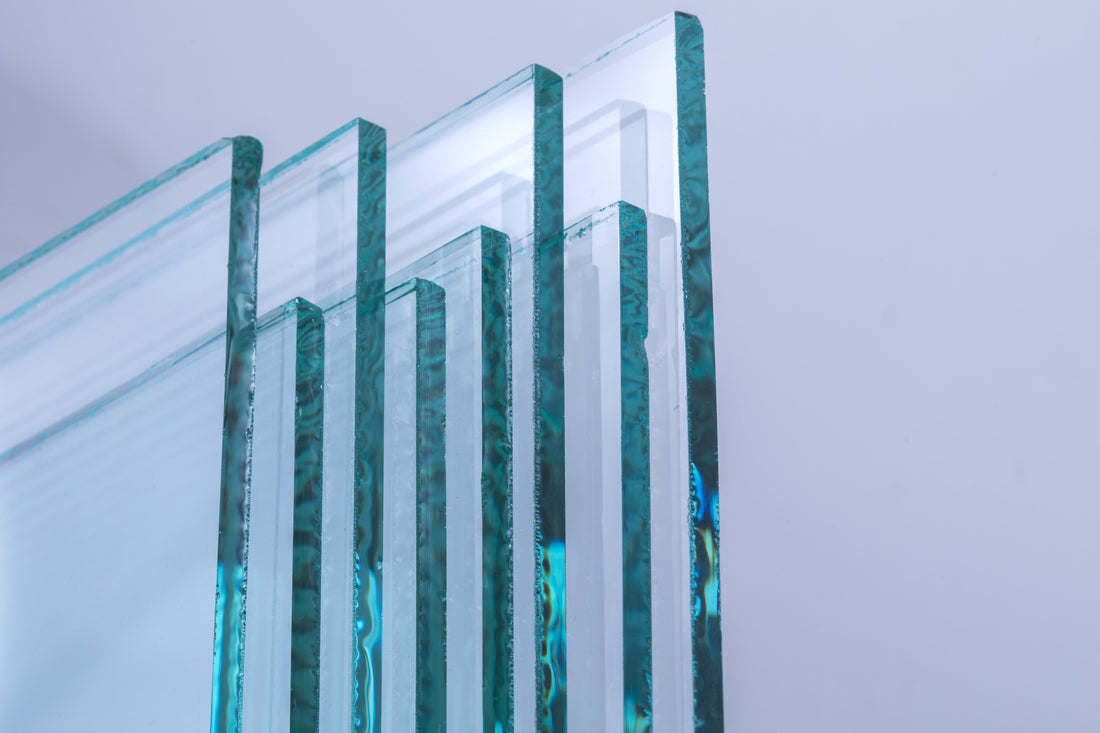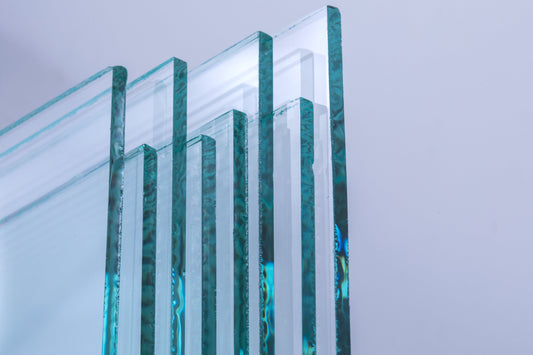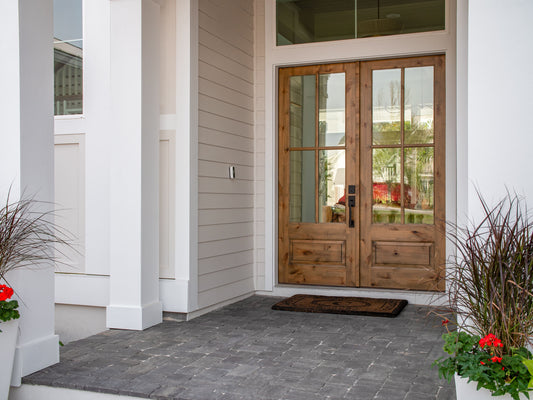What Is Tempered Glass?

Post Contents
Tempered glass is one of the most widely used architectural glass types in the world, valued for its strength, safety, and thermal resistance. It’s not just glass; it’s a high-performance material engineered to withstand impact, heat, and pressure far beyond what ordinary glass can handle.
If you’ve ever leaned against a glass railing, stood beside a shower enclosure, or looked through the side window of a car, you’ve likely encountered tempered glass.
How Tempered Glass Is Made
Tempered glass begins as annealed glass. It is heated in a specialized furnace to around 700°C (1,292°F) until it reaches a uniform temperature. Immediately after heating, the glass is rapidly cooled using high-pressure air jets.
This quick cooling process, known as quenching, hardens the outer surface while the inner core remains slightly flexible. The result is glass that is in surface compression and internal tension, a physical state that gives it up to five times the strength of regular glass.
When broken, tempered glass does not form sharp, dangerous shards. Instead, it disintegrates into small, rounded fragments, often called “pebbles,” which dramatically reduce the risk of injury.
Why Tempered Glass Is Different
Tempered glass offers a range of advantages that make it ideal for modern design and safety applications:
- Enhanced Strength: Roughly five times stronger than standard annealed glass.
- Thermal Resistance: Can withstand sudden temperature changes of up to 250°C without cracking.
- Visual Clarity: Maintains the same optical properties as non-tempered glass—no distortion or loss of light transmission.
- Safety: Classified as safety glass, meaning it minimizes injury risk when broken.
- Durability: Highly resistant to bending, impact, and thermal stress.
However, once glass is tempered, it cannot be cut, drilled, or modified. All fabrication must be completed before the tempering process.
A Note on Spontaneous Breakage
Although rare, tempered glass can occasionally spontaneously shatter. This occurs due to nickel sulfide inclusions, microscopic impurities that may expand over time when exposed to temperature changes. Reputable manufacturers minimize this risk through stringent quality control and heat-soak testing.
When to Use Tempered Glass
Tempered glass is recommended—and often required by building codes—in situations where strength, safety, or heat resistance are essential. Typical applications include:
- Architectural glazing: Windows, curtain walls, façades
- Interior elements: Doors, partitions, shower enclosures, wall cladding, railings, shelving
- Appliances: Oven doors, stovetops, fireplace screens
- Automotive: Side and rear car windows
Essentially, anywhere glass might be exposed to impact, human contact, or high heat, tempered glass is the safe and practical choice.
Performance and Properties
|
Property |
Tempered Glass |
|
Thermal Shock Resistance |
Up to 250°C |
|
Mechanical Strength |
4–5× stronger than annealed glass |
|
Tensile Strength |
~65 MPa |
|
Bending Strength |
120–200 N/mm² |
|
Surface Compression |
>95 MPa |
|
Design Stress |
~50 MPa |
|
Fragmentation |
Small, blunt pebbles |
|
Post-Processing |
No cutting, drilling, or etching after tempering |
Compliance and Standards
Tempered glass products used in architecture are tested and certified according to international safety standards, including:
- ANSI Z97.1 – Safety glazing for buildings
- ASTM C1036 – Specification for flat glass
- ASTM C1048 – Specification for heat-treated flat glass
- CPSC 16 CFR Part 1201 – U.S. safety standard for glazing materials
Design Flexibility
While tempered glass cannot be physically altered after tempering, it remains highly versatile for design purposes. It can be laminated, back-painted, digitally printed, or combined with other treatments to achieve both aesthetic and functional goals, all without compromising its structural integrity.
Tempered Glass for Strength and Reliability
Tempered glass is the foundation of modern architectural glazing—combining beauty, safety, and performance. From towering façades to elegant interior features, it provides the strength and reliability that today’s designs demand.
Whether the goal is protection, performance, or peace of mind, tempered glass remains an essential material that ensures buildings are durable, safe, and visually refined.



